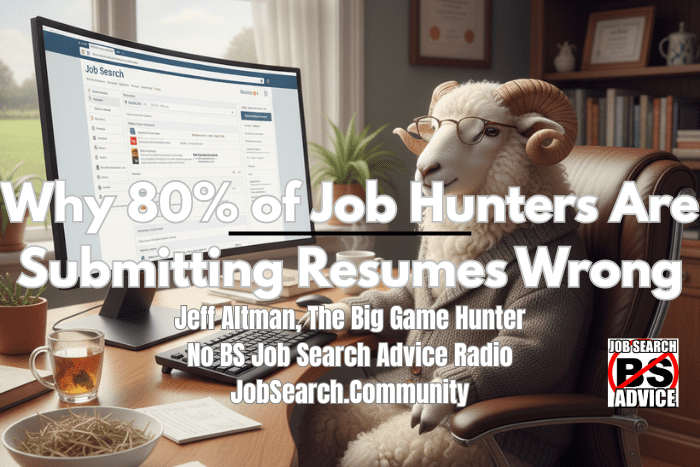Modern Resume Submission
Most job hunters are stuck in 2000s behaviors, blasting resumes into the void and wondering why they never hear back. Here’s the brutal truth: the game has completely changed, and if you’re still playing by old rules, you’re already losing.
The Fatal Flaw in Traditional Resume Submission
Here’s what happens to your resume when you click “Apply Now” on a job board:
It gets parsed by an Applicant Tracking System (ATS) that rejects 75% of resumes before human eyes ever see them
If it survives, it lands in a pile with 250+ other applicants for the same role
The hiring manager spends 6 seconds scanning it before moving on
The harsh reality: That “submit and pray” approach has a 2-3% success rate. You’re literally gambling with your career.
Strategy #1: The ATS Optimization Game-Changer
Before your resume reaches human hands, it must survive the robots. Here’s how winners beat the ATS:
The Mirror Method: Pull keywords directly from the job posting and naturally weave them into your resume. Not keyword stuffing—strategic alignment. Use the exact phrases they use. If they say “project management,” don’t write “managed projects.”
The Format That Wins: Stick to standard section headers (Experience, Education, Skills). Fancy graphics and tables confuse ATS systems. Use a simple, clean format with plenty of white space.
The Skills Section Secret: Create a dedicated skills section that mirrors their requirements. This is your ATS insurance policy.
Strategy #2: The Backdoor Approach That Actually Works
While everyone else applies through the front door, smart job seekers find the side entrance:
LinkedIn Reconnaissance: Before applying anywhere, identify 3-5 employees at your target company. Look for people in your desired department, recent hires, or alumni from your school.
The Warm Introduction Formula:
Connect with a genuine, personalized message
Mention a specific project or achievement of theirs
Ask for 15 minutes of their time to learn about company culture
Build rapport BEFORE mentioning you’re interested in opportunities
The Internal Referral Advantage: Referred candidates are 5x more likely to get interviews. One genuine internal connection beats 100 cold applications.
Strategy #3: The Modern Tracking System
Forget manila folders and ancient CRM systems. Today’s job search requires sophisticated tracking:
Use Notion or Airtable to create a database with these fields:
Company name and role
Application date and method
Key contacts and interactions
ATS keywords used
Follow-up schedule
Interview notes and outcomes
Track Your Metrics:
Application-to-response rate
Interview-to-offer conversion
Most effective application channels
Average response time by company size
The 3-Touch Rule: Plan three touchpoints for every application:
Initial application
Follow-up after one week
Value-add follow-up (article share, industry insight) after two weeks
The Truth About Job Boards and Resume Databases
The Big Job Board Trap: Sites like Indeed are where careers go to die. They’re optimized for the platform’s revenue, not your success. The best opportunities never make it to these sites—they’re filled through networks and referrals.
When to Use Them: Job boards are best for market research. Use them to:
Identify target companies
Understand salary ranges
Spot trending skills in your field
Find hiring manager names on LinkedIn
The LinkedIn Strategy: Instead of uploading to resume databases, optimize your LinkedIn profile to appear in recruiter searches. Use industry keywords, post relevant content, and engage with posts from your target companies.
Strategy #4: The Portfolio Approach
Stop sending just a resume. Create a compelling candidate package:
The One-Page Executive Summary: A visual, results-focused snapshot that tells your career story in 30 seconds.
The Problem-Solution Portfolio: For each target role, create a brief case study showing how you solved similar challenges. This is especially powerful for marketing, sales, and operations roles.
The Video Introduction: A 60-second professional video introducing yourself. Include it in your follow-up emails. It humanizes your application and dramatically increases response rates.
Advanced Tactics for Competitive Markets
The Insight Approach: Research the company’s recent challenges or initiatives. In your cover letter, propose specific solutions based on your experience.
The Multi-Channel Campaign: Don’t just apply online. Send a targeted package via LinkedIn, email a department head directly, and even consider a thoughtful direct mail piece for senior roles.
The Follow-Up Framework:
Week 1: Confirmation email with additional value (relevant article)
Week 3: LinkedIn message with industry insight
Week 5: Brief phone call or video message
The Numbers Game vs. The Precision Game
Old approach: Submit 100 generic applications and hope something sticks.
New approach: Research 20 ideal companies, identify key contacts, customize your approach, and execute targeted campaigns.
The precision approach has a 20-30% response rate vs. 2-3% for the spray-and-pray method. You’ll spend the same time but get 10x better results.
Your 30-Day Action Plan
Week 1: Audit and optimize your resume for ATS. Create your tracking system.
Week 2: Identify 20 target companies. Research key employees and decision-makers.
Week 3: Begin your multi-channel approach. Apply strategically while building relationships.
Week 4: Follow up systematically. Refine your approach based on initial responses.
The Bottom Line
The job market rewards strategy over volume, relationships over applications, and value over desperation. While your competition is still playing checkers, you’re now equipped to play chess.
Stop being another resume in the pile. Start being the candidate they can’t ignore.
Ready to accelerate your search? Track these metrics for 30 days and watch your interview rate triple.
Ⓒ The Big Game Hunter, Inc., Asheville, NC 2020, 2025

